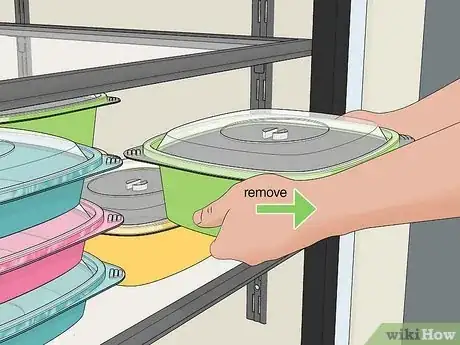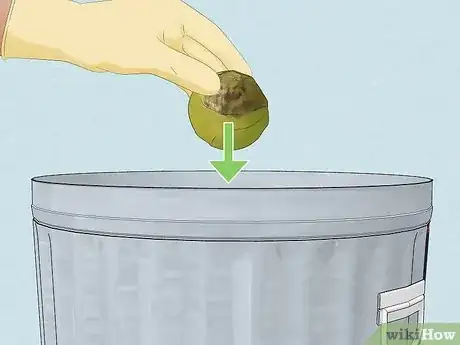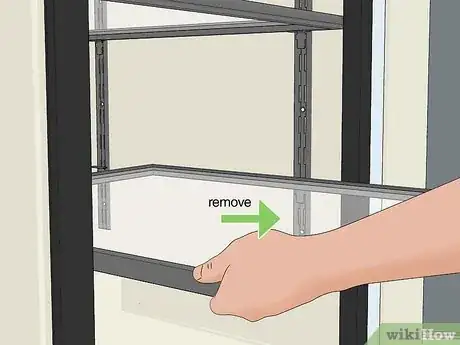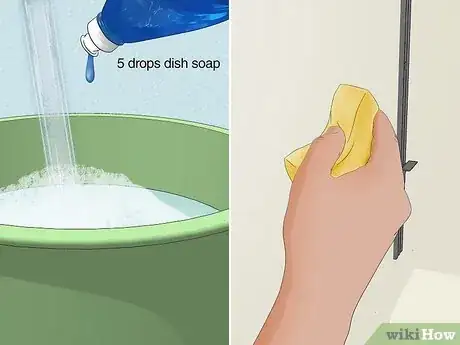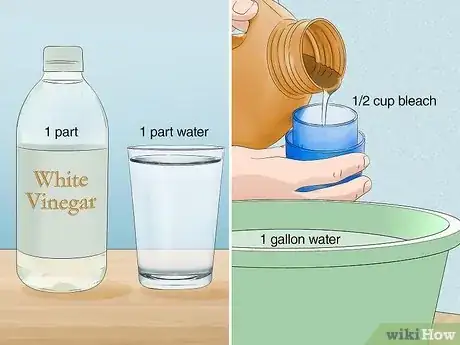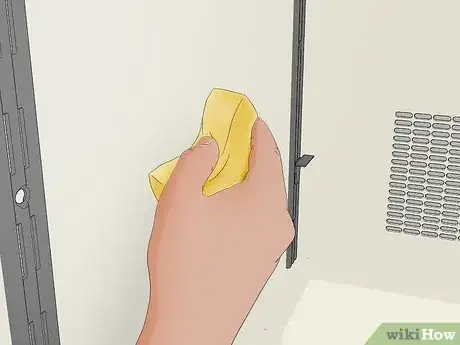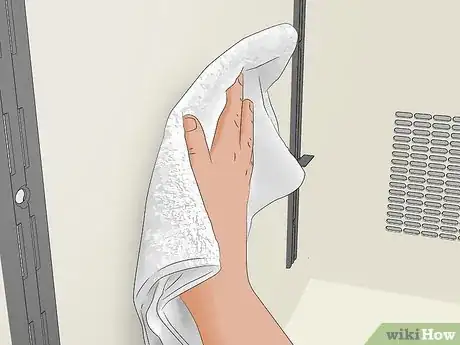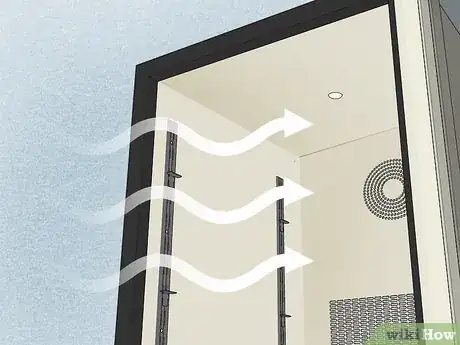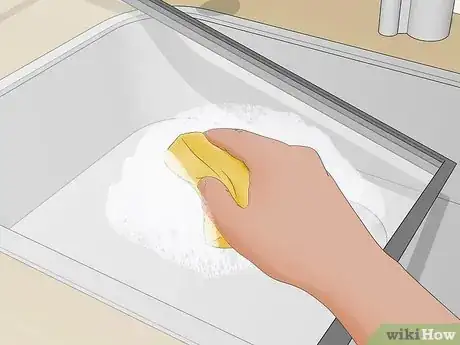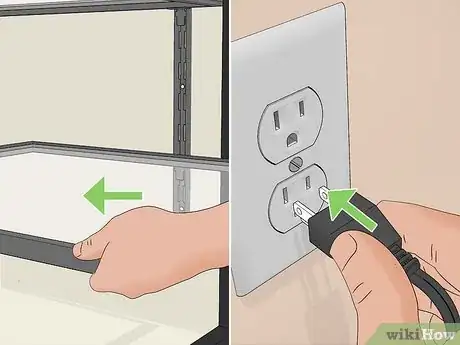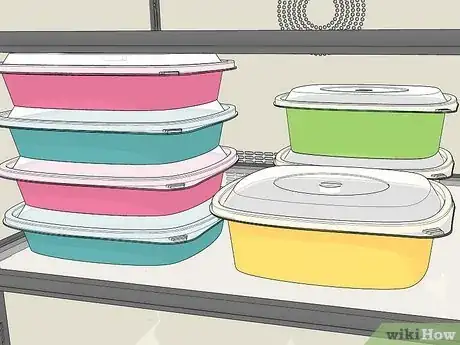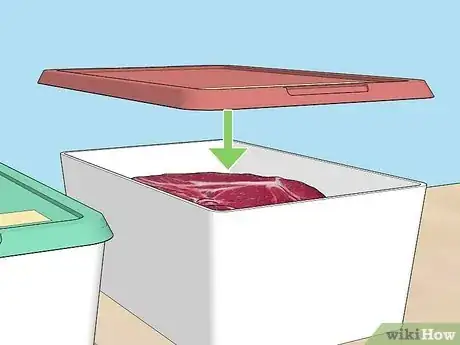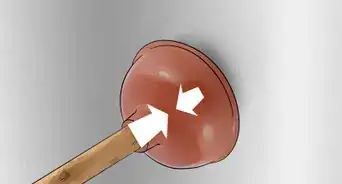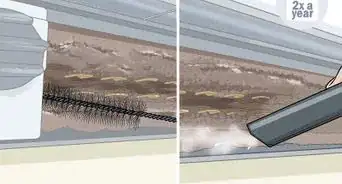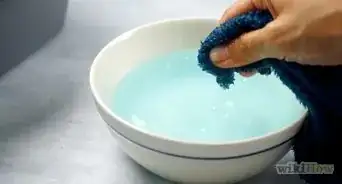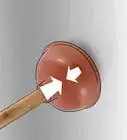This article was co-authored by James Sears. James Sears leads the customer happiness team at Neatly, a group of cleaning gurus based in Los Angeles and Orange County, California. James and the team have nine years of experience and offer green cleaning, interior and exterior window washing, and general apartment cleaning services. He provides transformative cleaning experiences by reducing clutter and renewing your home environment. James is a Trustee Scholar at the University of Southern California.
This article has been viewed 321,951 times.
Many people love eating fish, but a fishy smell in the refrigerator is very unpleasant, and can actually taint other foods. The key to getting rid of a fish smell in the refrigerator is to empty the fridge, clean everything thoroughly, and use products to absorb leftover smells. Preventing fish smells is always the easiest approach, however, and you can do this by keeping all containers and bags tightly sealed, and by using ingredients before they go bad.
Steps
Emptying the Refrigerator
-
1Remove all the food from the fridge and freezer. The easiest way to clean the refrigerator thoroughly is when it’s empty. It’s also important to clean the freezer too, because the fridge and freezer share the same air, meaning the fish smell could have invaded the freezer too. To preserve the food while you work, you can:
- Store it in coolers with ice packs
- Transfer it to a friend’s or neighbor’s fridge
- Leave it outside if it’s cold enough
-
2Throw out tainted or rotten food. To ensure that the fish smell, or some other bad smell, doesn’t come back when the fridge is clean, locate the source of the smell and throw it out. While you're at it, throw out any food that’s gone bad, moldy, or rotten.
- Smell every morsel of food in the fridge to check for fish smell as well. Items that weren't sealed and stored properly could have picked up the odor. Throw out anything that smells like fish.
EXPERT TIPJames Sears leads the customer happiness team at Neatly, a group of cleaning gurus based in Los Angeles and Orange County, California. James and the team have nine years of experience and offer green cleaning, interior and exterior window washing, and general apartment cleaning services. He provides transformative cleaning experiences by reducing clutter and renewing your home environment. James is a Trustee Scholar at the University of Southern California.House Cleaning Professional
 James Sears
James Sears
House Cleaning ProfessionalOur Expert Agrees: Completely empty the fridge of all food. Throw away what you don't need, and see if you can identify the source of the smell.
Advertisement -
3Unplug the fridge. Getting rid of a fish smell in a refrigerator means some serious cleaning and airing out, and you don’t want to waste electricity while you do this. The best way to conserve electricity is to unplug your fridge once all the food is out.
- Once you turn the fridge off, make sure you leave the doors open until it has completely defrosted, otherwise you could get mold.
-
4Remove the drawers, shelves, and racks. Fish smell could have permeated the entire fridge, and the best way to get rid of it is to clean every surface. Fridge drawers, shelves, and racks are removable, and they’ll be much easier to clean if they're out of the refrigerator.
- To keep these items out of the way, place them on the counter or on top of the fridge until you're ready to tackle them; try to stay organised and separate the ones you have cleaned by putting them back in the fridge. [1]
Cleaning the Refrigerator
-
1Clean the refrigerator with soap and water. Fill a bucket with hot water. As the water is running, add about five drops of a liquid dish detergent. Swish the water around so suds form. Dip a sponge or cloth into the soap and water. Wring out the excess, and clean every inch of the interior surface of the fridge and freezer with the soap and water solution.
- Re-soak and wring out the sponge frequently as you clean.
- When you're finished, fill a bucket with plain water. Use a clean sponge to wipe down the surfaces with the clean water.
-
2Mix a disinfectant cleaning solution. There are a number of cleaning solutions you can use to clean your refrigerator, and most of them are basic household cleaning products. Depending on what you have available and your preferences, you can mix in a bucket:[2]
- Equal parts water and white vinegar
- ½ cup (118 ml) of bleach mixed with 1 gallon (3.8 L) of water
- Baking soda mixed with enough water to make a paste
- 1 quart (946 ml) of water mixed with ¼ cup (55 g) of baking soda and a few drops of liquid dish detergent
-
3Disinfect the refrigerator and freezer. Dip a sponge or cloth into your cleaning solution. Wring out the excess. Inside the fridge and freezer, wipe the sides, top, bottom, and any shelving, trays, and other surfaces. Dip the sponge back into the cleaning solution frequently to keep it saturated.
- When you're finished, fill a clean bucket with water. Wipe down the surfaces with plain water to remove excess cleaner.
EXPERT TIPJames Sears leads the customer happiness team at Neatly, a group of cleaning gurus based in Los Angeles and Orange County, California. James and the team have nine years of experience and offer green cleaning, interior and exterior window washing, and general apartment cleaning services. He provides transformative cleaning experiences by reducing clutter and renewing your home environment. James is a Trustee Scholar at the University of Southern California.House Cleaning Professional
 James Sears
James Sears
House Cleaning ProfessionalExpert Trick: If you've cleaned the refridgerator thoroughly and there's still a smell, generously apply white vinegar to any surfaces inside of the fridge.
-
4Towel dry the surfaces. Use a dry microfiber cloth, rag, or towel to wipe down all the interior surfaces of the refrigerator and freezer. This will help prevent water spots from forming, and speed up the air-drying process.
-
5Air out the fridge and freezer. When the fridge and freezer have been thoroughly cleaned and wiped with water, leave the doors open and let them air out. You may need to tie the doors to something nearby to secure them in the open position. Air out the fridge and freezer for at least two hours, and as long as two days if you can.
- When the doors are open, don’t leave children and pets unattended in the room to prevent them from getting stuck.[3]
-
6Clean and disinfect the drawers, shelves, and racks. Follow the same process for the drawers, shelves, and racks that you used for the rest of the fridge. Start by cleaning the surfaces with a soap and water mixture, and then wipe them with water. Wipe the surfaces with the disinfectant solution, followed by water. Finally, rinse the components under running water.
- When you're finished, set the drawers, shelves, and racks aside to air dry. Leave them out of the fridge while it airs out.
Absorbing Excess Odors
-
1Assemble and plug in the refrigerator. When the refrigerator and freezer have had sufficient time to air out, return the drawers, shelves, and racks to their original positions. Plug the appliance back in and let it cool down.
- Most refrigerators will need about six hours before they're at the correct operating temperature, and up to 24 hours before they're ready for food.
-
2Place an odor-absorbing material in the fridge and freezer. An odor absorber will help remove any traces of fish smell that may still be lingering. Place the odor absorber in the fridge as soon as you turn it back on. Close the doors and leave the odor-absorber inside for 24 hours before replacing the food. Odor-absorbers you can use include:
- Baking soda sprinkled on two large plates. Place one plate in the fridge and one in the freezer.
- Two bowls filled with fresh coffee grounds. Place a bowl in the fridge and in the freezer.
- Newspaper sheets crumpled up and stuffed into the open spaces of the fridge and freezer.
- Bowls filled with lighter-fluid free charcoal. Place one bowl in the fridge and one in the freezer.
-
3Return foods to the chilled fridge and freezer. After 24 hours, pull the odor absorber out of the refrigerator and freezer. Return the food you’ve had stored to the fridge. Once the fridge is organized, you can put a bowl or plate of baking soda or coffee grounds back into the fridge.
- If you continue to use baking soda or coffee grounds as odor absorbers in the fridge, replace the odor absorber with a fresh batch every month.[4]
-
4Prevent future smells. There are a few ways you can keep your fridge clean and odor-free, and one of the most important is to clean spills immediately. You should also use foods before they go bad, and throw out foods as soon as they start to go off. Another important element in fighting fridge odors is storing foods properly:[5]
- Store leftovers in airtight containers
- Transfer open foods like fish and meat to airtight containers or sealable bags
- Make sure all lids are secured properly
- Seal freezer bags and other bags properly before storing them
Expert Q&A
-
QuestionHow can I clean my fridge?
 Jonathan TavarezJonathan Tavarez is the Founder of Pro Housekeepers, a premium cleaning service headquartered in Tampa, Florida catering to residential and commercial clients across the United States. Since 2015, Pro Housekeepers uses rigorous training methodologies to ensure high quality cleaning standards. Jonathan has over five years of professional cleaning experience and has over two years of experience as the Communications Director for the United Nations Association Tampa Bay. Jonathan earned a BS in Management and Marketing from the University of South Florida in 2012.
Jonathan TavarezJonathan Tavarez is the Founder of Pro Housekeepers, a premium cleaning service headquartered in Tampa, Florida catering to residential and commercial clients across the United States. Since 2015, Pro Housekeepers uses rigorous training methodologies to ensure high quality cleaning standards. Jonathan has over five years of professional cleaning experience and has over two years of experience as the Communications Director for the United Nations Association Tampa Bay. Jonathan earned a BS in Management and Marketing from the University of South Florida in 2012.
Property Hygiene Enabler
-
QuestionWhat if I did all of this and I still have a fish smell?
 Community AnswerI had this problem and tried all of the above without success. Eventually found that the plastic strips clipped onto the edges of the glass shelves were hiding dirt that I hadn't got to. I removed all the plastic and recleaned. No more smells.
Community AnswerI had this problem and tried all of the above without success. Eventually found that the plastic strips clipped onto the edges of the glass shelves were hiding dirt that I hadn't got to. I removed all the plastic and recleaned. No more smells. -
QuestionWhat if bicarbonate of soda doesn't work for getting rid of fish smell in fridge?
 Community AnswerThe smell must be in the inside insulation of the unit's cabinet. Now is the time to get a new fridge.
Community AnswerThe smell must be in the inside insulation of the unit's cabinet. Now is the time to get a new fridge.
Things You'll Need
- Soap
- Water
- Three bucket
- Three sponges
- Disinfectant
- Towel
- Odor absorber
References
- ↑ http://www.goodhousekeeping.com/institute/a16593/ghri-forte-odor-stain-removal/
- ↑ https://cleaning.tips.net/T010946_Removing_Seafood_Odor_from_Refrigerators.html
- ↑ http://www.goodhousekeeping.com/institute/a16593/ghri-forte-odor-stain-removal/
- ↑ http://www.thekitchn.com/do-i-really-need-to-buy-a-new-box-of-baking-soda-every-month-good-questions-186841
- ↑ https://www.youtube.com/watch?v=JAu1tYljOwk
About This Article
If your refrigerator smells like fish, you can get rid of the stench by emptying it and cleaning it out. Remove all of the food, drawers, and shelves from your fridge. Then, unplug it and clean the inside with hot soapy water. After that, clean it with a disinfectant solution. You can easily make your own with equal parts water and white vinegar. Dry the fridge with a clean towel or cloth and leave it to air for at least 2 hours. While the fridge is airing, clean the drawers and shelves. If the smell still lingers, place a plate of baking soda or fresh coffee grounds in the fridge and leave it for another 24 hours to absorb the smell. Store your food in coolers with ice packs in the meantime. For more tips from our Cleaning co-author, including how to prevent future smells in your fridge, read on!
